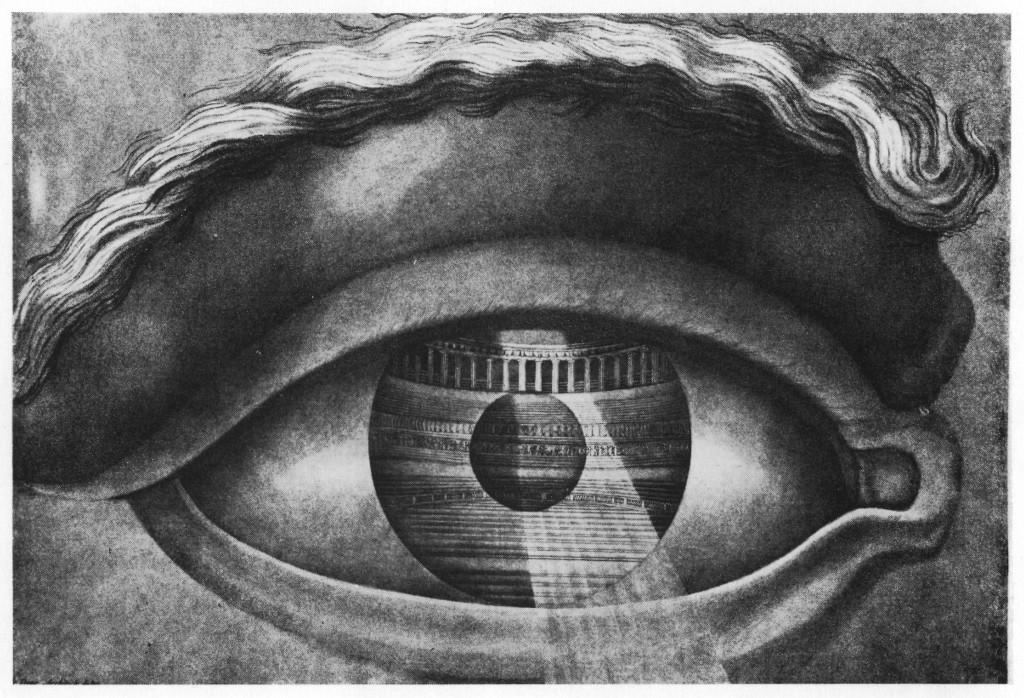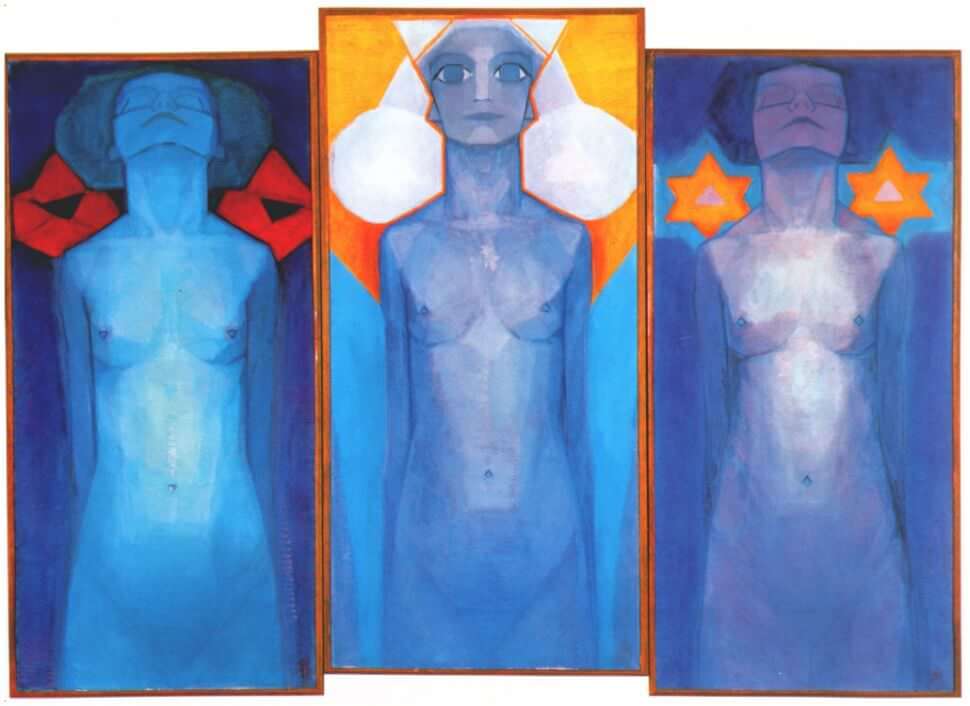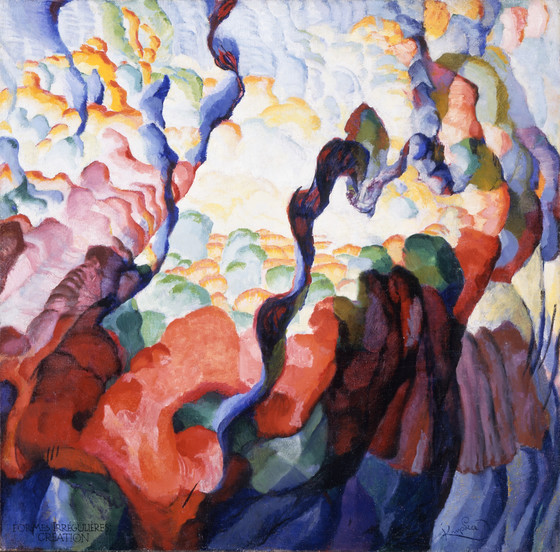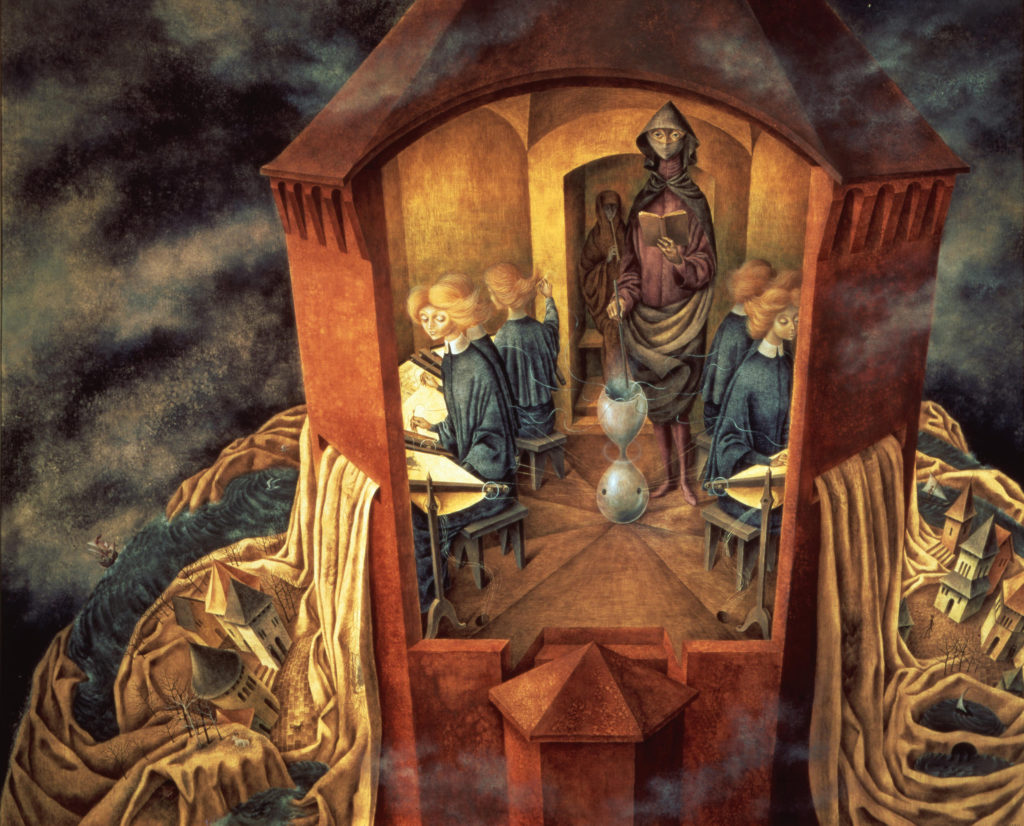
This exploratory artistic vision continued to expand and abstract the reality around us with the planar concepts of Cubism. That eventually transformed into Futurism with its explorations of both space and time on the same canvas. Works like Nude Descending a Staircase by Marcel Duchamp, the work of Umberto Boccioni, and many others, vividly captured the movement and motions of the world in a very present manner. There was nothing ‘intellectualized’ about it. The intellectualization – and perhaps laziness – began with Dada and the Avant Garde (of whom Marcel Duchamp was a sizable contributor.) But even then it was new. It was different. It turned art on its head.

From this bed of creativity – born out of artists in back room studios – hash and opium smokers – Theosophists and spiritualists – Fascist Reformers and Manifesto writing madmen and women – was born the first brushstrokes straight from the intuitive imagination – Abstract Expressionism. Kandinsky, Joan Miro, Frantisek Kupka, and many others birthed a new art form: the art of the imagination. Their tentative beginnings resulted in canvases and compositions devoid of realistic elements. This was the kindergarten of vision. This was closing the eyes, listening to the symphony and saying ‘What is that feeling? What does it look like?’

This use of art as a tool of inner exploration was a completely new vision and approach. It is only in the past 100 years that this has grown into a full blown – and highly validated – form of expression. In fact, realists today are scorned. It is because of this that I have often felt that the early 1900s was the beginning of a second Renaissance – from our sciences and mathematics to our psychology and philosophy to our arts and writing – we have made tremendous transitions from who we were into… whatever it is we have yet to become. In large part it was due to pointing the lens inwards, gaining new understandings of space and time – just as the introduction of 3 point perspective and a non-earthcentric cosmology transformed the art and sciences of Rennaissance Europe.
In any case, as this lens of ‘how do we see’ continued to shift inwardly away from the edge of our sight – the inbetween spaces. The vision of the Surrealists found itself focused squarely on the dark corners, the absurd, the beautiful, and the desire for transcendence through their dream and nightmare-like reveries. Here we can look to the work of Max Ernst, Rene Magritte, Remedios Varo, and, of course, Salvador Dali. Their visions blend the realism of the Symbolists, the emotional impact of the Romantics, the abstract intuitions of the Abstract artists with a visions directly from their own imaginations. This was the, I believe, the first translations of the inner human archetypes that didn’t simply use Zeus or Eve or other repeated characters of myth and legend as emotional placeholders.

Post WWII saw a dramatic shift and, tired of the heaviness of war and desiring something new and different once again, the Abstract Expressionists rose to the forefront. These were, in my opinion, messy drunkards: Jackson Pollack, Robert Rauschenberg, and Cy Twombly splashing paint every which way, making scribbles, seemingly trying as little as possible, and lauded by critics (mostly men, but that is a discussion for another time) as the new wave of art. And thanks to the intersections of critic/curator/artist it became very expensive. Often, it didn’t make much sense to the public but it was supposedly the new, the modern. From there came Pop Art, Op Art, and Minimalism: all easy to digest, easy to talk and wax critically about. It was timeless, useless, superficial. And, somehow, it became the norm. It became the institution. Art hasn’t looked back since. It just continues along on it’s over-talked-about, under-performing road of intellectualization. It is here that we find the roots of LaChappelle, Jeff Koons, Damien Hirst, and so on – artists attempting art as a form of marketing, following on the heels of Warhol and others.